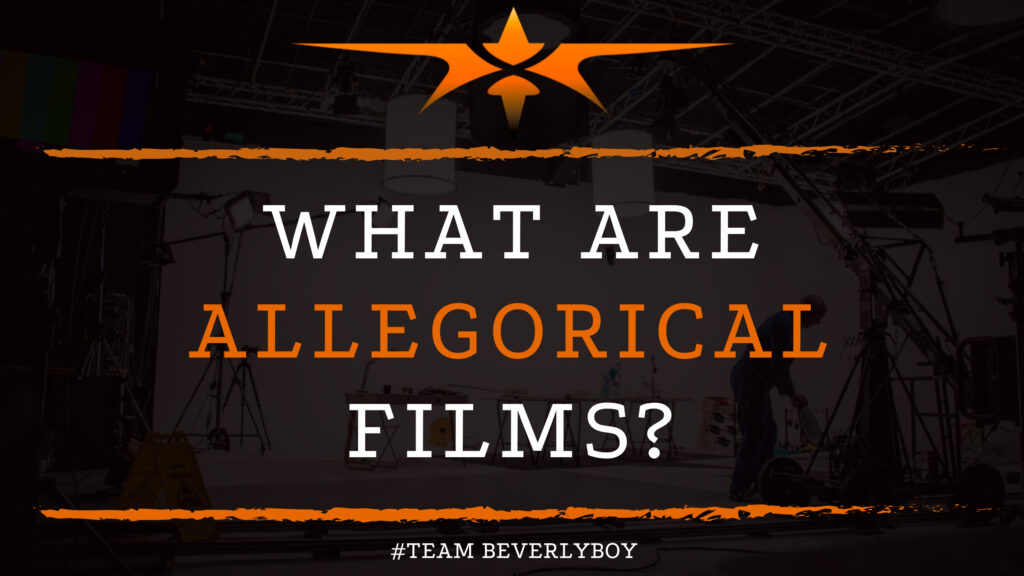What Are Allegorical Films?
Allegories are used in filmmaking for a variety of purposes and represent a key element of storytelling in which hidden meaning is created without outright stating the meaning. This form of symbolism in which something is conveyed to the audience through a sort of hidden guise has been used in literature, art and film with great success for many years. When allegory is incorporated throughout a movie, we call it an allegorical film. Allegorical films use this unique storytelling technique of conveying symbolic meaning to the audience to create deeper meaning within their message.

What is Allegory?
Allegory represents a literary technique that is used in poetry, literature, art, and in filmmaking to create depth and symbolic meaning behind the message that the work is delivering to the spectator, viewer, or other audience member. An allegory is a very important part of a symbolic story in which the message is a hidden attempt at creating symbolism for the audience without actually announcing it.
Allegories in film are used to communicate something symbolic, usually either political or moral, which forms deeper meaning within the story. This storytelling technique is sometimes confused with metaphors, however it’s important to understand that allegory and metaphors are not one in the same.
Metaphors seek to create a one-to-one symbolic meaning whereas allegories represent symbolism in more of a grand scheme of things. Allegorical films may have many metaphorical messages tied into the overall story which represents an allegory whereas you would not expect an entire film to be metaphorical.
What are Allegorical Films?
Allegorical films are those which have hidden messages or ulterior meanings that are typically either moral or political in nature. According to definitions, allegorical films are the result of a visual narrative that uses symbolism in which one thing stands for something entirely different and has hidden meaning or a hidden idea. To understand how allegorical films work, it makes sense to first examine the concept of allegory in full detail.
With an allegory, there is the tenor and the vehicle of the story. Tenor represents the hidden concept or idea, it’s the meaning that the filmmaker is trying to convey to the audience symbolically. The vehicle represents the object, word, image or other narrative that “carries” the message. To further help you understand how tenor and the vehicle of allegorical films operate, let’s take a look at some examples.

Examples of Allegorical Films
Allegory is frequently found in films of all genres and styles. The relationship of tenor and the vehicle in allegorical films can be further understood by the following examples:
Disney/Pixar’s Inside Out
In Inside Out, Riley plays the little girl who happens to have an interior mental landscape that includes several allegorical figures that are represented by characters by the name of Joy, Sadness, Fear, Anger and Disgust. The concepts of emotions in this allegorical film represent the tenor and the squishy humanoids that are in the control room within Riley’s brain are the vehicles.
The Wizard of Oz
In The Wizard of Oz, the allegory is represented by the various political interpretations that are to be made throughout the story. It has been widely claimed that this film was a political allegory representing American politics of the 20th century. Dorothy is an allegory for the nobility of the Midwest, the Tin Man represents industry, and the Scarecrow represents agriculture. It is also stated that together, the Scarecrow, Tin Man, and Cowardly Lion from the film are representative of American society at the turn of the century.
Whether The Wizard of Oz is examined as an allegory of the representation of the Populist Era of the U.S. in which there was a large push from both farmers and laborers which would grow out of the grassroots efforts of farmers’ fraternity known as The Grange, or the focus is on the monetary debates that plagued the U.S. in the final quarter of the 19th century, there’s no doubt the film is full of allegories.
Avatar
In Avatar, some say the symbolism that is found in this allegorical film represents a political research test around the world. Avatar has been defined as an allegorical film by a variety of groups. Russian Communists found it to be justification of Obama’s Nobel Peace Prize whereas many theorists have speculated that the film is an allegory about the United States’ war on terrorism. Still others have stated that Avatar represents symbolic messaging about the oppression and destruction of indigenous cultures and environments.
Fight Club
In Fight Club, the symbolism is a message of consumerism. Allegorical films like Fight Club deliver political messaging through symbolism that seeks to connect the audience without actually stating the message outright. The allegory behind Fight Club is seen as a symbolism of the rite of passage from adolescence in contemporary society.
So, how much do book authors receive for film rights? It really depends on the book and the negotiations that are made, as well as on the production budget.
Different rights will come with different expenses and a higher budget could lead to a higher reward for the author.

